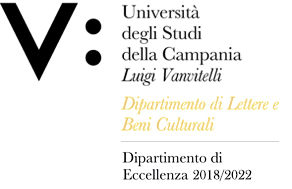Federico PAOLINI
Insegnamento di STORIA CONTEMPORANEA
Corso di laurea in LETTERE
SSD: M-STO/04
CFU: 12,00
ORE PER UNITÀ DIDATTICA: 60,00
Periodo di Erogazione: Secondo Semestre
Italiano
| Lingua di insegnamento | Italiano |
| Contenuti | Il corso offrirà agli studenti le basi che permetteranno loro di orientarsi fra le complesse dinamiche politiche, sociali ed economiche dell’epoca contemporanea. In particolare, gli argomenti affrontati saranno i seguenti: il lungo Ottocento (industrializzazione e urbanizzazione; la costruzione degli stati nazionali; l’imperialismo e il nuovo assetto geopolitico); il mondo nell’Età dei conflitti mondiali (1900-1945); il mondo nella Guerra fredda; il mondo nell’Età della Globalizzazione (1980-2001); i nuovi soggetti sociali dopo il 1945; la storia culturale dopo il 1945; attori tradizionali sempre più globali: le Chiese e le religioni dopo il 1945; i nuovi attori globali dopo la decolonizzazione; i problemi economici dell’economia globalizzata. |
| Testi di riferimento | Lucio Caracciolo, Adriano Roccucci, Storia contemporanea. Dal mondo europeo al mondo senza centro, Le Monnier Università, 2017. |
| Obiettivi formativi | Conoscenze e abilità da acquisire: |
| Prerequisiti | E' richiesta una conoscenza sommaria (a livello della scuola superiore secondaria) della storia contemporanea dalle rivoluzioni settecentesche all’inizio del XXI secolo. |
| Metodologie didattiche | Lezioni frontali, materiali in Powerpoint. |
| Metodi di valutazione | Esame scritto composto da 6 domande aperte che verteranno sul manuale e sugli argomenti affrontati a lezione. Ogni domanda ha un valore compreso fra 0 (conoscenza insufficiente) e 5 (conoscenza elevata). |
| Programma del corso | Il lungo Ottocento: industrializzazione e urbanizzazione; la costruzione degli stati nazionali; l’imperialismo e il nuovo assetto geopolitico; |
English
| Teaching language | Italian Language |
| Contents | The course will provide students with a foundation that will allow them to navigate through the complex dynamics of political, social and economic effects of the modern and contemporary era. In particular, the topics covered will be: the “long Nineteenth century” (industrialization and urbanization, the construction of national states, imperialism and the new geopolitical structure), the World in the Age of World Wars (1900-1945); the World in the Cold War; the World in the Age of Globalization (1980-2001); the new social subjects after 1945; cultural history after 1945; traditional actors increasingly more global: Churches and religions since 1945; the new global players after decolonization; the economic problems of the global economy. |
| Textbook and course materials | Lucio Caracciolo, Adriano Roccucci, Storia contemporanea. Dal mondo europeo al mondo senza centro, Le Monnier Università, 2017. |
| Course objectives | Knowledge and understanding: attaining knowledge of some advanced issues, within the scientific sector |
| Prerequisites | The knowledge (at the level of secondary school) of contemporary history from the eighteenth-century revolutions to the beginning of the XXI century. |
| Teaching methods | Lectures, Powerpoint materials. |
| Evaluation methods | Written exam consisting of 6 open questions that will focus on the textbook and on the topics covered during the course. Each question has a value between 0 (insufficient knowledge) and 5 (high knowledge). |
| Course Syllabus | The “long Nineteenth century”: industrialization and urbanization, the construction of national states, imperialism and the new geopolitical structure; |








